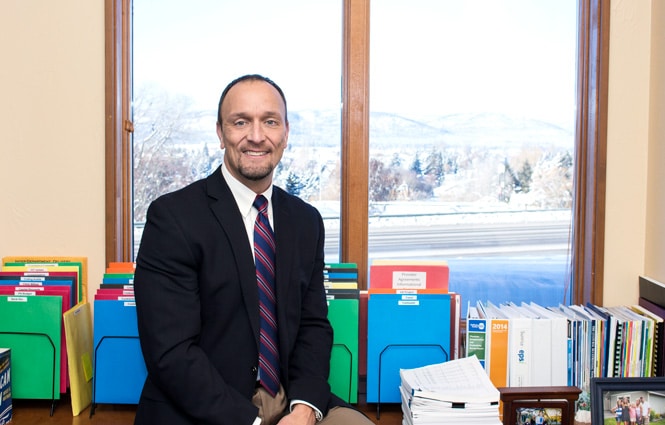Ensconced in Montana’s Flathead Valley, Kalispell Regional Healthcare (KRH) is quietly growing. Over the past several years, the network has grown outside of its mountainous home base of Kalispell to serve more than 170,000 people across a geographical region of twenty thousand square miles. In that time, more than 80 percent of practices in the region have aligned themselves with KRH, which now encompasses more than two hundred physicians.
One of the key figures in the network’s expansion is Jon Mohatt, the CFO of KRH’s Physician Network. The network is particularly important because that’s where all the practices reside once they have been acquired. Mohatt is essentially tasked with making these acquisitions part of the KRH family. That means aligning all of the individual practices with the network and steering each practice onto a path of financial sustainability.

“They have to be fiscally sustainable, not only right now but five years down the road,” Mohatt says. “Just like any other large acquisition, real estate or otherwise, you set yourself up for success upon acquisition. If you acquire the physician’s practice properly, with the right compensation model from the beginning, you set yourself up for a successful journey and a successful practice.” That includes a great deal of vetting and due diligence, as well as anticipating everything that will change once they’re part of the system.
Now that KRH’s acquisition process is nearly finished, Mohatt is working to create a sense of administrative consistency among the practices. First and foremost, he’s aligning human resources with corporate process and policies. “We started with the mandatory policies and procedures, and now, we’re beginning with laying one into place to ensure additional efficiencies,” Mohatt says. “So, not only are we compliant, but now, we’re also going to start capitalizing on our system and its ability to provide benefits to our practices and ultimately to our patients.”
“The best approach in healthcare is to keep folks from having to access the system. Keep them healthy so they don’t have to seek services.”
The acquisition process also includes utilizing a central lab and a core group of medical and pharmaceutical vendors and incorporating central housekeeping and grounds maintenance departments. “We’re growing those services on the hospital side so they can provide services to the forty-five practices that we’ve now grown to,” Mohatt says. He is particularly excited for the new EMR system that will roll out to Kalispell’s entire network and ensure greater flexibility and consistency across the board.
Although these acquisitions will need to adjust administratively, it’s important to Mohatt and to KRH that these physicians retain a sense of independence. “Part of our philosophy in bringing in these practices is to still allow them a sense of entrepreneurship,” Mohatt says. “We want the physician leaders to still be physician leaders.”
That’s why physicians join networks like KRH, after all. “As the administrative and regulatory burdens increase, the physicians’ tolerance for dealing with that and their ability, financially, to deal with that lessens,” Mohatt says. “It gets to a critical point where a physician just wants to practice medicine.”
In addition to giving physicians greater freedom, KRH’s numerous acquisitions have also allowed the company to inch closer to the cutting edge of healthcare. “I feel that our senior administration and all of us have a keen eye on the future and on where the industry is going,” Mohatt says. That includes adopting value-based reimbursement—a lower-cost, fee-for-value model, rather than a fee-for-service model—that KRH leadership hopes to make a reality through enrolling in the Comprehensive Primary Care Plus (CPC+) pilot program. Nine of Kalispell’s primary care practices have been accepted into the program, which aims to redesign payment models and care delivery infrastructure on a national scale. KRH is well-positioned for that move, as its development of patient-centered medical homes, a model of care coordination through primary care physicians, is already far along. In fact, the system’s medical homes recently achieved Level 3 status, the highest designation offered by the National Committee on Quality Assurance.
The health system’s initiatives dovetail with its burgeoning interest in adopting a population health model. “The best approach in healthcare is to keep folks from having to access the system,” Mohatt says. “Keep them healthy so they don’t have to seek services, and then have them access it at the appropriate level for care, ideally through their primary care physicians and not the doors of the ER. Our willingness to participate in these programs will motivate us to move faster in that direction.”
With all these structural and administrative changes on the horizon, Mohatt is hesitant to plan too far into the future. “We’re really creating a laser focus on where we want to be with our strategic plan,” he says. “It’s hard to go past two years with a strategic plan.” It’s also important to Mohatt that KRH continues to improve on a day-to-day basis. “Right now, we’re focusing on how we can improve the patient experience,” he adds. The health system is clearly ready for the future, but Mohatt also understands that the present is just as important.
“Being a not-for-profit, our number one priority continues to be the needs of our community,” Mohatt says. “Our community-based needs assessment is critical. Our community is who we answer to.”
